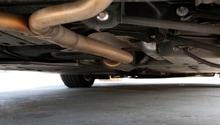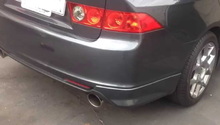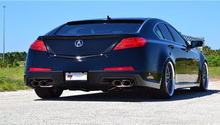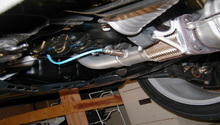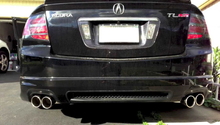Acura TL and MDX: Exhaust Modifications
Modifying the exhaust system on your Acura TL or MDX can add a few horses under your hood. Read on to learn about your options.
This article applies to the Acura TL (2004-2014) and MDX.
The stock exhaust system on the Acura is designed well, but it's obviously not the freest flowing solution. Upgrading the exhaust system on your Acura can allow the gases exiting your engine to flow much better. The more efficiently your engine is able to expunge used exhaust gasses, the more power it will make.
The J-series V6 in your Acura has four main components that make up the exhaust. Going from the engine on back we have the exhaust manifolds (headers), pre-cats (catalytic converters), just downstream of the manifolds are the "J-pipe" and third cat, as well as the cat-back exhaust that runs from the J-pipe to the tailpipes. Each piece is separate and can be replaced piecemeal, if you are so inclined. Depending on your budget and goals, you may only want to replace certain portions of the exhaust, or you may want to replace everything. Read on to learn more.
Exhaust Modifications
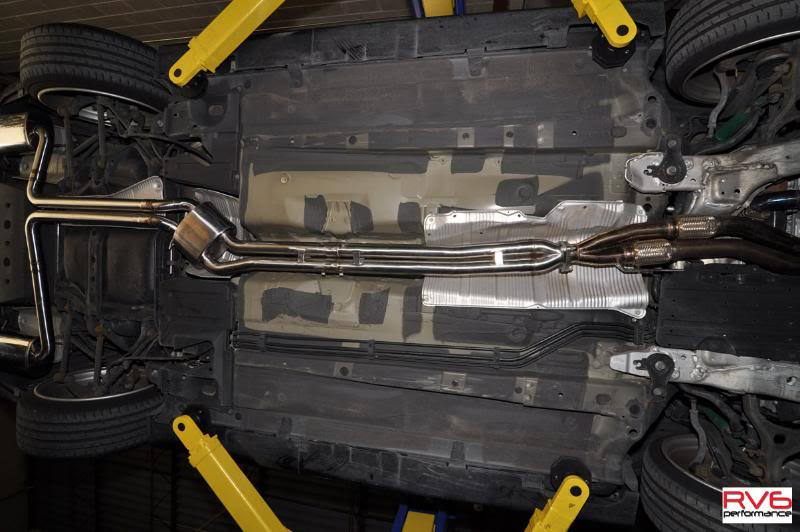
#1 Headers
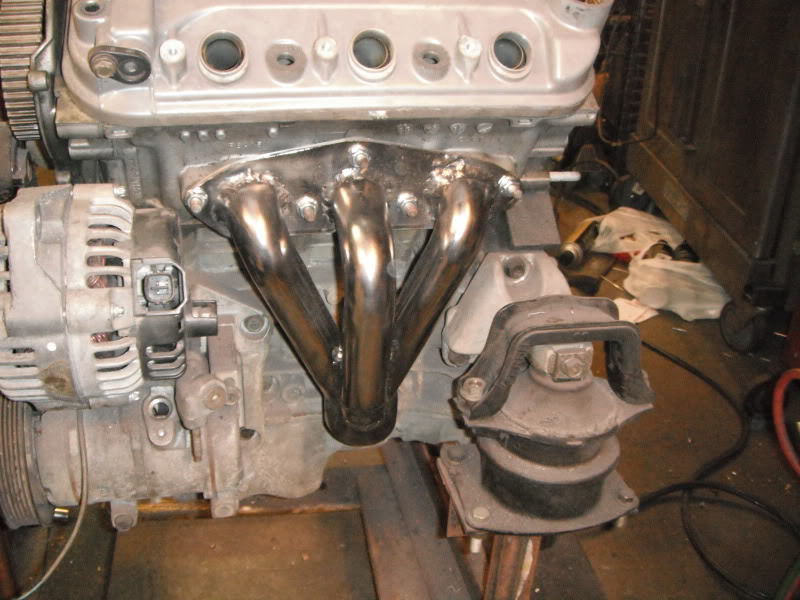
DIY Cost – $300-800
Professional Cost – $500-1,000
Skill Level – Moderate; accessing the rear manifold can be tricky.
The exhaust manifolds are a common point of exhaust restriction on just about any car. While the downstream piping diameter has less overall effect on performance, small changes to the manifolds can drastically affect power, torque and the engine's ability to breathe at higher RPM. The OEM manifolds on the J32 engine are pretty efficient in terms of primary diameter; however, they do have crush bends in their design, and are made of heavy cast iron. Aftermarket headers can straighten those bends and use lighter-weight construction. This improves peak power, and in this application, less weight over the nose of the car is always a plus.
#2 Pre-Cats
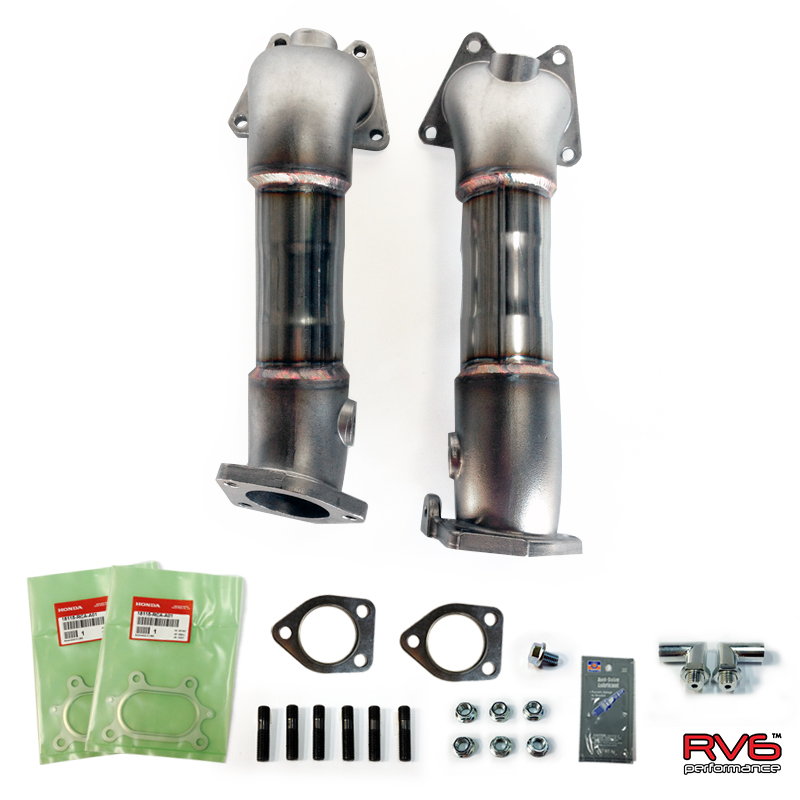
DIY Cost – $160-400
Professional Cost – $300-600
Skill Level – Moderate; this job requires working under the car in a tight area.
Most modern cars have their primary catalytic converters integrated into the exhaust manifolds, but the J-series V6 uses a separate manifold and catalytic converter. This means the catalytic converter can be replaced independent of the manifold if you are so inclined. Doing so is much more simple than replacing the manifolds, and forum chatter indicates that there are greater gains to be had by deleting this primary cat vs replacing the manifold. Additionally, there have been reported instances of the pre-cats failing, causing chunks of catalytic converter material to either clog the exhaust, or worst case scenario, get sucked back into the engine via exhaust valve overlap, causing permanent engine damage. For a couple hundred bucks, you can do a "preventative" modification that frees up a few horsepower.
#3 J-Pipe + 3rd Cat

DIY Cost – $400-600
Professional Cost – $600-800
Skill Level – Moderate; reaching the upper portion of the J-pipe can be a bit of a pain.
Although this modification can increase your HP by 5-10whp, it's most notable for its deep sound. The J-pipe is one of the most common exhaust modifications done to any J-series powered car as it offers the greatest relative power gain of any one exhaust component on the car. The J-pipe has the most complicated bends and design, so a more optimally designed aftermarket unit has the ability to greatly outperform the stock unit in terms of flow. Additionally, aftermarket J-pipes can delete the third downstream catalytic converter, netting you gains on the higher side of that 5-10whp range.
#4 Cat-Back
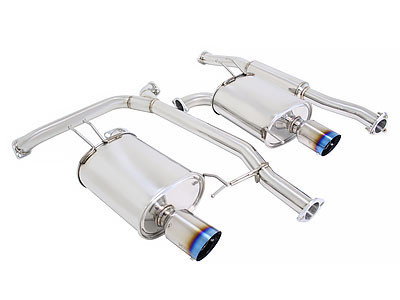
DIY Cost – $300-600
Professional Cost – $350-700
Skill Level – Easy; access is plentiful and all exhausts of this type offer bolt-on installation.
You've reached the end of the exhaust pathway at this point, and you've also reached modification with the most aftermarket options available, the cat-back. Referring to the portion after the last catalytic converter (from the cat-back), cat-back exhausts are usually what people think of when referring to aftermarket exhausts. Prices vary wildly between brands, due to brand name, construction and materials. Most cat-backs come with between 2.5" to 3" piping. The V6 engine will definitely breathe better with the 3" pipes, but will sound a bit boomier and be more prone to droning at highway speeds. Fortunately, the cat-back is easily installed, modified and customized to get the sound you want. On this platform, power gains will be modest, we're going for decibels and tonality with the cat-back. Cat-backs can go from muffler shop specials done on the cheap, to very expensive, beautifully welded exhausts, so regardless of your budget, everyone can get behind this exhaust modification.
Related Discussions
- Performance Mods - AcuraZine.com
- High Flow Precat - AcuraZine.com
- J-Pipe Questions - AcuraZine.com
- Exhaust Archives with Video - AcuraZine.com
- RV6 High Flow Cats with XLR8 J-Pipe - AcuraZine.com
- RV6 J-pipe Review - AcuraZine.com

